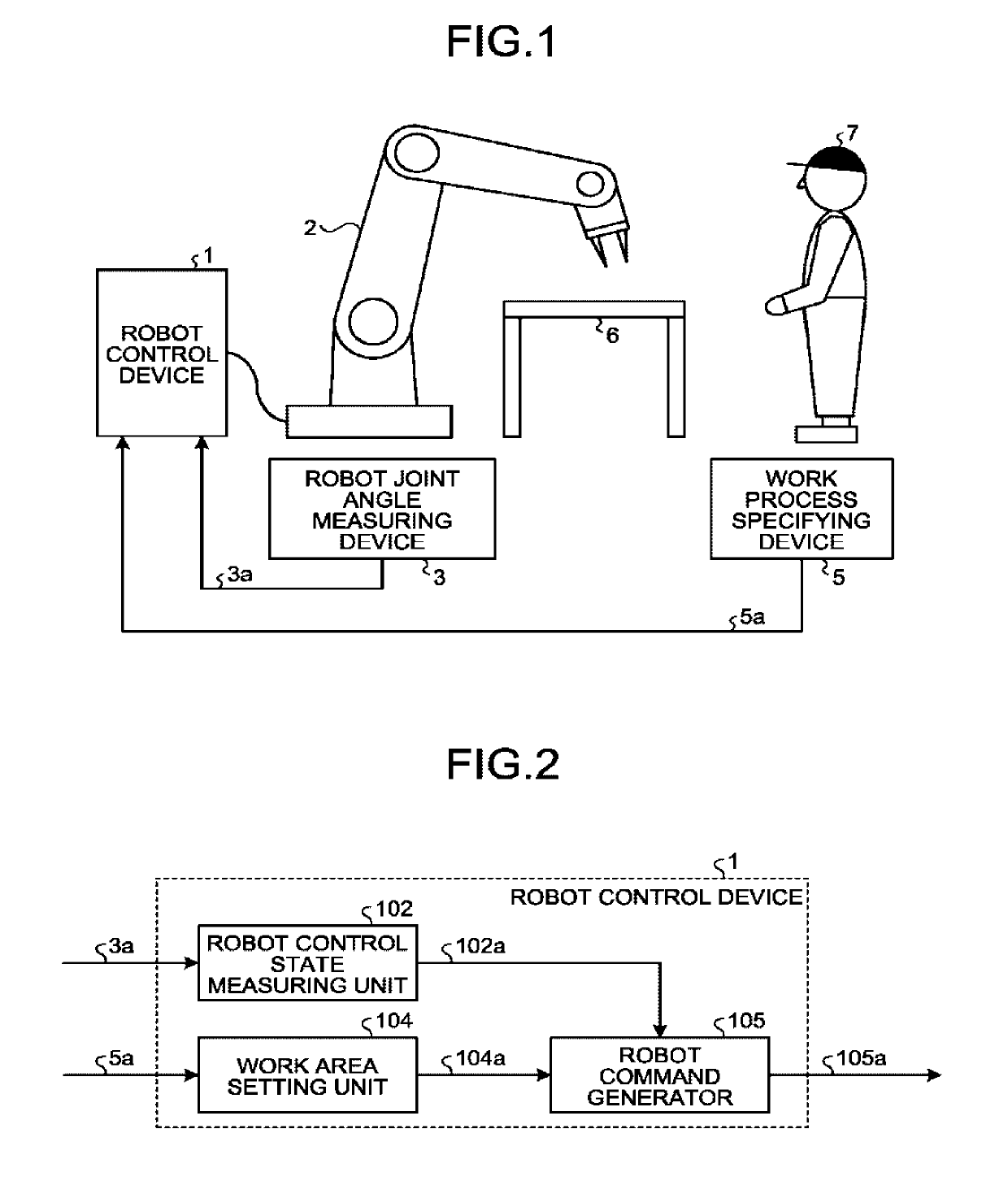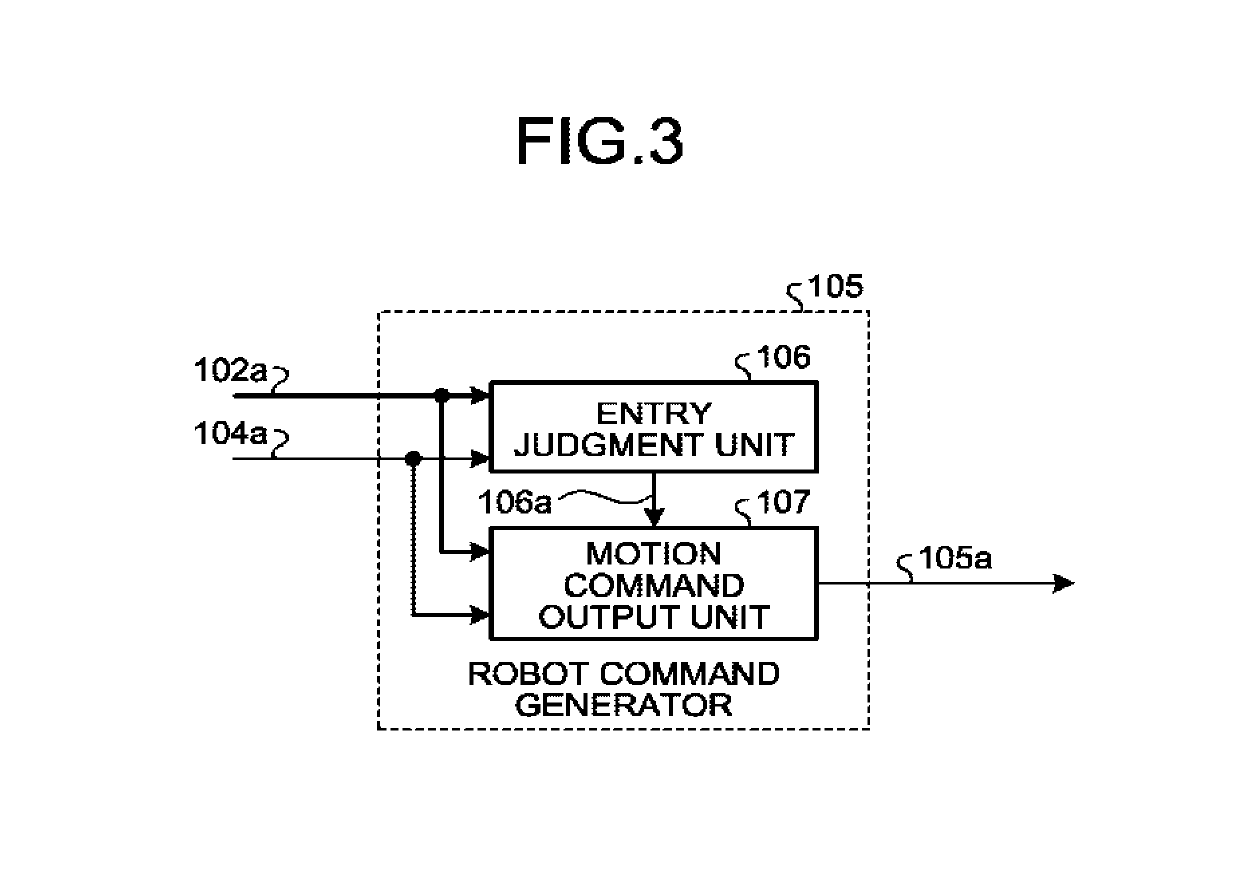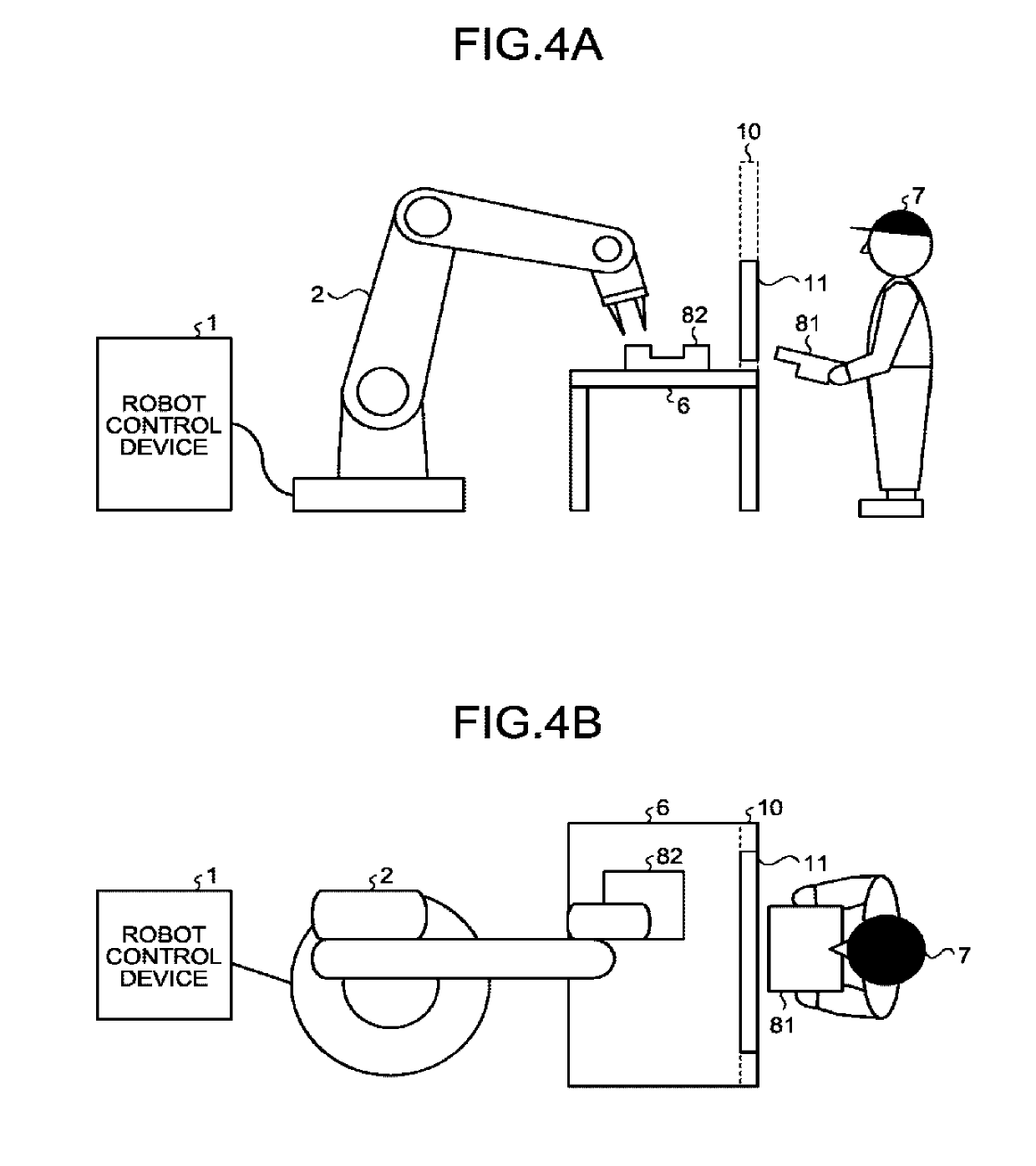Robot control device
a robot control and robot technology, applied in the field of robot control devices, can solve problems such as reducing work efficiency, and achieve the effect of reducing collision possibility and high work efficiency
- Summary
- Abstract
- Description
- Claims
- Application Information
AI Technical Summary
Benefits of technology
Problems solved by technology
Method used
Image
Examples
first embodiment
[0026]FIG. 1 schematically illustrates a robot system including a robot control device 1 according to the first embodiment of the present invention, and an example of a worksite to which the robot system is applied. The robot control device 1 illustrated in FIG. 1 is connected to a robot 2 and outputs a motion command to the robot 2 on the basis of a robot joint angle signal 3a from a robot joint angle measuring device 3 and a work process specifying signal 5a from a work process specifying device 5. In the worksite illustrated in FIG. 1, a workbench 6 is disposed, and a worker 7 is present. The robot 2 operates while sharing a work space with the worker 7.
[0027]FIG. 2 is a block diagram illustrating an example configuration of the robot control device 1 illustrated in FIG. 1. The robot control device 1 illustrated in FIG. 2 includes a robot control state measuring unit 102 that measures robot control state information 102a indicative of a robot position and a robot posture. The rob...
second embodiment
[0045]In the present embodiment, a description is provided of a robot command generator that operates in a robot control device to evacuate the robot 2 from a work area. FIG. 5 is a block diagram illustrating an example configuration of the robot control device 1A according to the present embodiment. The robot control device 1A illustrated in FIG. 5 includes the robot command generator 105A in place of the robot command generator 105 illustrated in FIG. 2.
[0046]FIG. 6 is a block diagram illustrating an example configuration of the robot command generator 105A illustrated in FIG. 5. The robot command generator 105A illustrated in FIG. 6 includes an evacuation trajectory generator 108 and, in place of the motion command output unit 107 illustrated in FIG. 3, a motion command output unit 107A.
[0047]On the basis of the robot control state information 102a, the evacuation trajectory generator 108 generates evacuation trajectory information 108a that extends from a current control state o...
third embodiment
[0059]In the present embodiment, a description is provided of operation of the robot that is evacuated in advance from a work area subsequent to a current work process of the worker.
[0060]FIG. 8 is a block diagram illustrating an example configuration of a robot control device 1B according to the present embodiment. In FIG. 8, constituent elements that are similar to the constituent elements illustrated in FIG. 2 are denoted by the same reference signs, and descriptions of those constituent elements are omitted. The robot control device 1B illustrated in FIG. 8 includes a work area setting unit 104B in place of the work area setting unit 104 illustrated in FIG. 2 and includes a robot command generator 105B in place of the robot command generator 105.
[0061]The work area setting unit 104B stores, in addition to a work area for the work process, a subsequent work process, such that the work area setting unit104B sets, for output, the work area corresponding to the subsequent work proce...
PUM
 Login to View More
Login to View More Abstract
Description
Claims
Application Information
 Login to View More
Login to View More - R&D
- Intellectual Property
- Life Sciences
- Materials
- Tech Scout
- Unparalleled Data Quality
- Higher Quality Content
- 60% Fewer Hallucinations
Browse by: Latest US Patents, China's latest patents, Technical Efficacy Thesaurus, Application Domain, Technology Topic, Popular Technical Reports.
© 2025 PatSnap. All rights reserved.Legal|Privacy policy|Modern Slavery Act Transparency Statement|Sitemap|About US| Contact US: help@patsnap.com



